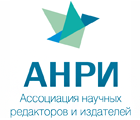DOI 10.17586/0021-3454-2025-68-9-799-808
UDC 629.7.036:621.373
TECHNOLOGICAL ASPECTS OF FORMING THIN-FILM FUNCTIONAL STRUCTURES ON THE SURFACES OF ACCELEROMETER UNITS
Concern CSRI Elektropribor, JSC, Saint Petersburg, 197046, Russian Federation; Scientific Researcher
O. S. Yulmetova
Concern "CSRI "Elektropribor", JSC, Saint Petersburg, 197046, Russian Federation; ITMO University, Saint Petersburg, 197101, Russian Federation; Head of Sector; Professor of Practice
S. N. Belyaev
Concern CSRI Elektropribor, JSC, Saint Petersburg, 197046, Russian Federation; Senior Researcher
A. G. Shcherbak
Concern CSRI Elektropribor, JSC, Saint Petersburg, 197046, Russian Federation; Head of Sector
S. A. Shcherbak
St Petersburg Academic University — Nanotechnology Research and Education Centre of the RAS, Department of Physics and Technology of Nanoheterostructures; Student
Reference for citation: Tit М. А., Yulmetova О. S., Belyaev S. N., Shcherbak S. А., Shcherbak А. G. Technological aspects of forming thin-film functional structures on the surfaces of accelerometer units. Journal of Instrument Engineering. 2025. Vol. 68, N 9. P. 799–808 (in Russian). DOI: 10.17586/0021-3454-2025-68-9-799-808.
Abstract. The technology of forming thin-film functional coatings on flat surfaces of precision accelerometers by magnetron sputtering is considered using examples of aluminum deposition in the manufacture of a base plate for a sensitive element of a micromechanical accelerometer. A mathematical model of uniform thickness coating formation on a flat surface is presented, and the main significant parameters of the spraying process are determined. The optimized parameter is the orientation angle of the substrate relative to the magnetron target, and the optimization criterion is the minimum value of the standard deviation of the coating thickness. The effectiveness of the proposed model is confirmed by the practical results of studies of the characteristics of the coatings obtained.
Abstract. The technology of forming thin-film functional coatings on flat surfaces of precision accelerometers by magnetron sputtering is considered using examples of aluminum deposition in the manufacture of a base plate for a sensitive element of a micromechanical accelerometer. A mathematical model of uniform thickness coating formation on a flat surface is presented, and the main significant parameters of the spraying process are determined. The optimized parameter is the orientation angle of the substrate relative to the magnetron target, and the optimization criterion is the minimum value of the standard deviation of the coating thickness. The effectiveness of the proposed model is confirmed by the practical results of studies of the characteristics of the coatings obtained.
Keywords: thin film coating, magnetron sputtering, thickness uniformity, accelerometer
Acknowledgement: the work was carried out with the financial support of the Ministry of Science and Higher Education of the Russian Federation, state assignment No. FSRM-2023-0009.
References:
Acknowledgement: the work was carried out with the financial support of the Ministry of Science and Higher Education of the Russian Federation, state assignment No. FSRM-2023-0009.
References:
- Yulmetova O.S. Ionno-plazmennyye i lazernyye tekhnologii v giroskopicheskom priborostroyenii (Ion-plasma and Laser Technologies in Gyroscopic Instrumentation), Doctor’s thesis, St. Petersburg, 2019, 244 р. (in Russ.)
- Belyaev S.N., Shcherbak A.G. Materialy XXXIII konferentsii pamyati N.N. Ostryakova (Proceedings of the XXXIII Conference in Memory of N.N. Ostryakov), October 4-6, 2022. (in Russ.)
- Raspopov V.Ya. Mikromekhanicheskiye pribory (Micromechanical Devices), Tula, 2002, рр. 7–95. (in Russ.)
- Electronics: Science, Technology, Business, 2009, no. 7. (in Russ.)
- Petropavlovsky Yu. Radio pilot, 2015, November. (in Russ.)
- Boyko A., Zavodin O.A., Simonov B. Electronics: Science, Technology, Business, 2009, no. 8, pp. 100–103. (in Russ.)
- Bozhkov V.G. Kontakty metall–poluprovodnik: fizika i modeli (Metal-Semiconductor Contacts: Physics and Models), Tomsk, 2016, 528 р. (in Russ.)
- Danilin B.S., Syrchin V.K. Magnetronnyye raspylitel'nyye sistemy (Magnetron Sputtering Systems), Moscow, 1982, 72 р. (in Russ.)
- Danilin B.S. Primeneniye nizkotemperaturnoy plazmy dlya naneseniya tonkikh plenok (Application of Low-Temperature Plasma for Thin Film Deposition), Moscow, 1989, 328 р. (in Russ.)
- Chernigovsky V.V., Martynyukov S.A., Lisenkov A.A., Kostrin D.K. Proceedings of Saint Petersburg Electrotechnical University, 2018, no. 4, pp. 5–12. (in Russ.)
- Saghatelyan G.R., Shishlov A.V. Science and Education. Bauman Moscow State Technical University. Electronic journal, 2014, no. 11, pp. 458–481. (in Russ.)
- Morachevsky A.G. et al. Prikladnaya khimicheskaya termodinamika (Applied Chemical Thermodynamics), St. Petersburg, 2008, 254 р. (in Russ.)
- Lyakishev N.P., ed., Diagrammy sostoyaniya dvoynykh metallicheskikh sistem (Phase Diagrams of Binary Metallic Systems), Moscow, 1996, vol. 1, 992 р. (in Russ.)
- Usoltseva D.S. Elektronnaya, atomnaya struktura i fazovyy sostav kompozitnykh Al-Si (Electronic, Atomic Structure and Phase Composition of Composite Al-Si), Candidate’s thesis, Voronezh, 2018. (in Russ.)
- Cherkunov V.I. Proceedings of Saint Petersburg Electrotechnical University, 2025, no. 1(18), pp. 1421, DOI: 10.32603/2071-8985-2025-18-1-14-21. (in Russ.)











